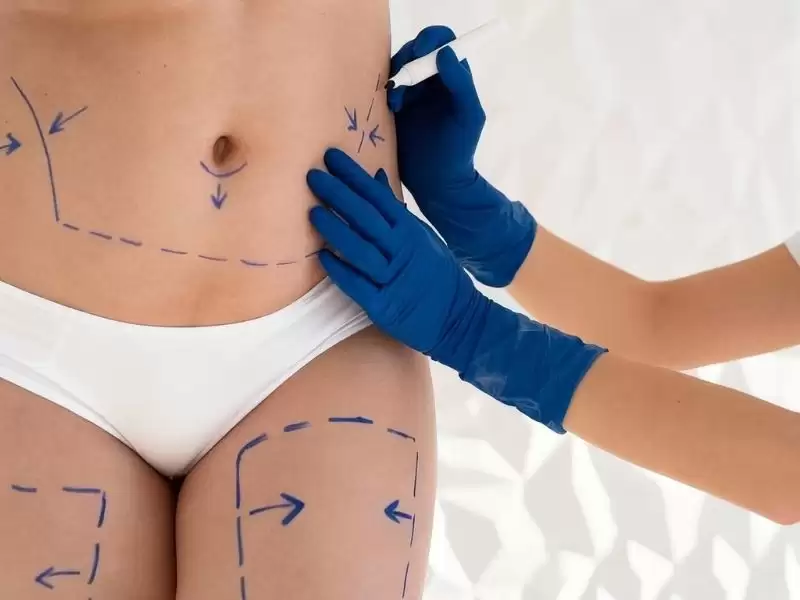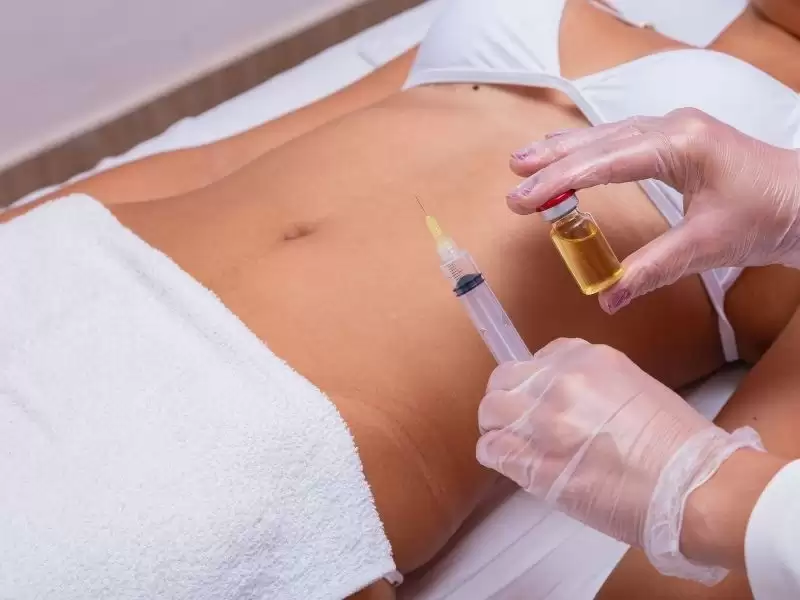Ankara Lipedema is a chronic and progressive fat tissue disorder characterized by abnormal subcutaneous fat tissue accumulation, particularly in the lower extremities. Swelling in the lower and upper extremities is symmetrical and often painful. Hormones and genetic predisposition are thought to play a role in the development of lipedema.
Contents
- What is Lipedema?
- What Are the Stages of Lipedema?
- What Are the Problems Associated with Lipoedema?
- How is Lipedema Diagnosed?
- How Is Lipedema Treated?
- Can Lipedema Be Treated Without Surgery?
- How Much Fat Can Be Removed from the Body in Lipedema Treatment?
- Lipedema Ankara
- Frequently Asked Questions About Lipedema
In Ankara, lipedema often goes undiagnosed due to a lack of awareness and diagnostic uncertainties. It is also frequently misdiagnosed as obesity or lymphedema. Lipedema patients who are told they are obese or overweight are often directed toward strict diets and exercise, but weight loss occurs in the upper extremities and torso, which are tissues unaffected by lipedema. This situation does not reduce the disproportionate fat distribution in the body and creates a feeling of failure in patients. Weight gain tends to affect lipedematous tissue first. The accumulation of fluid and fat tissue in lipedema affects movement and quality of life.
What is Lipedema?
Lipedema is a condition that manifests as abnormal fat accumulation in the legs, causing aesthetic issues and negatively impacting bodily functions. Lipedema is a genetically inherited condition. Due to genetic factors passed on to the individual, genetic problems arise, resulting in secondary fat accumulation in the legs, particularly due to estrogen hormone imbalance. In this respect, we can say that lipedema is actually a hormonal-metabolic problem.
Lipedema is also referred to as painful leg syndrome, manifesting itself by causing excessive swelling, particularly in the hip and leg areas. The swelling that occurs does not affect the feet, but causes fluid and fat accumulation. Lipedema is a chronic disease; it is a fat tissue disorder that causes abnormal swelling in the legs, hips, and thighs.
The rare disease of lipedema occurs more frequently in women, but it is also observed in men. Lipedema, whose symptoms begin to appear with puberty, can cause pain and bruising on the skin.

What Are the Stages of Lipedema?
Lipedema typically develops bilaterally and symmetrically, starting from the hips and extending down the legs. The feet are not affected in lipedema, which is particularly important in distinguishing it from obesity. The transition zone between normal and abnormal tissue becomes apparent at the ankle.
Lipedema is classified into 5 types based on fat distribution. Some patients may fit into more than one type. The upper extremities tend to be spared until the advanced stages of the disease. Other clinical features of lipedema include edema that increases when standing and decreases with elevation, leaving no or only slight pitting. The presence of obesity can increase the clinical course of lipedema and its symptoms.
We can classify the stages of lipedema development into four stages as follows:
- Stage 1: The skin surface is normal, adipose tissue is increased, soft, and may contain small nodules. No symptoms are observed on the skin at this stage, but the legs appear swollen and fatty.
- Stage 2: There is a larger fat mass. Nodular changes in the subcutaneous tissue and an orange peel appearance on the skin are present. In this stage, changes that can be observed on the skin occur.
- Stage 3: Symmetrical large fat lobules and skin folds are present on the medial knee, lateral hip, and abdomen. Fat packets become visible at this stage.
- Stage 4: This is the type of lipedema accompanied by lymphedema (lipo-lymphedema). In the final stage of lipedema, the patient experiences significant difficulties in their daily life.
What Are the Problems Associated with Lipoedema?
Clinically, lipedema is characterized by an abnormal distribution of fat tissue, resulting in a noticeable disproportion between the arms, legs, and torso. This disproportion is considered to be the result of an asymmetrical appearance in the subcutaneous fat tissue, regional increases in body fat, and the hypertrophy and hyperplasia of fat cells.
Obesity is considered a major factor in lipedema. Therefore, the primary goal is to prevent obesity and achieve weight control. In the treatment of lipedema, exercise is indicated to contribute to body weight control in addition to diet. It is thought that the burning of stored fat, increasing body muscle mass, and ultimately preventing the formation or progression of lipedema would be beneficial.
It is a fact that lipedema is a progressive disease that most commonly affects women, and that the onset of lipedema is usually seen during a hormonal change process such as puberty, pregnancy, or menopause.
How is Lipedema Diagnosed?
Women have more essential fat because body fat in women is found in the breasts, pelvic area, and thighs, supporting reproductive function. Storage fat primarily plays a role as an energy reserve in adipose tissue in the form of triglycerides. This fat accumulates under the skin and protects internal organs from trauma by surrounding them. Storage fat is generally stored in fat cells to be used when needed.
Whether body weight is within the normal range should not be determined solely by body mass index; body composition should also be taken into account. Individuals with a high muscle mass weight component should not be classified as overweight. Body weight is the sum of bone, muscle, organ, body fluid, and adipose tissue weights. Abnormalities in complex mechanisms can cause fluctuations in body weight.
MRI, lymphoscintigraphy, and high resolution are the main methods used in the diagnosis of lipedema. In addition, the ability to pinch the skin of the toes with tweezers is considered a sign of lipedema, while the inability to do so indicates lymphedema.
How Is Lipedema Treated?
Lipedema is a metabolic, hormonal, and adipose tissue disorder. In this regard, the following roadmap is generally followed during lipedema treatment.
- The primary goal in lipedema treatment is to prevent water retention in the body. To this end, emphasis is placed on diet, and sodium intake is restricted.
- Certain exercises must be performed, with the aim of accelerating lower extremity circulation through these exercises.
- When surgical intervention is necessary, liposuction is preferred. After applying local anesthesia to the area where fat and fluid accumulation is observed, fat cells are removed. The legs are reshaped as the fat is removed. This greatly eliminates the factors that complicate the person's life and achieves a symmetrical appearance.

Can Lipedema Be Treated Without Surgery?
Surgical intervention is a necessity in the treatment of lipedema. Methods such as the use of compression stockings and sodium restriction can be applied to support treatment, but these are only supplementary to the main surgical treatment.
Lipedema is a condition that requires surgical treatment in order to eliminate the effects it causes in the patient and minimize the negative effects of existing symptoms.
How Much Fat Can Be Removed from the Body in Lipedema Treatment?
During lipedema treatment, there is a specific limit to the amount of fat that can be removed from the body through liposuction. This limit is established for the safety of the patient and the procedure.
The safety limit for the amount of fat that can be removed from the body through liposuction treatment for lipedema is 5-6 liters. In addition, no more than 5-6% of the body weight should be removed. Otherwise, irregularities in blood circulation may occur in the body.
Lipedema Ankara
Lipedema is a disease that has a genetic component and gradually increases its negative effects on a person's life. In this regard, patients need to take the necessary steps for the treatment of this disease before it seriously impacts their lives.
For information about lipedema treatment options in Ankara and to ask any questions or make inquiries, please contact us.
Click here for information about Leg Lifting in Ankara.
Frequently Asked Questions About Lipedema
How can I tell if I have lipedema?
Lipedema is an abnormal accumulation of fat and fluid in the thighs, hips, lower legs, and arms. The swelling in these areas is disproportionate, painful to the touch, and prone to bruising. The swelling is usually symmetrical, and unlike other conditions, lipedema does not cause swelling in the feet.
Can lipedema be cured?
Treating lipedema often requires surgery. It can be managed through surgical procedures, manual lymphatic drainage, compression therapy, exercise, and weight control.
Can lipedema be detected in blood tests?
Lipedema cannot be detected through blood tests. To diagnose lipedema, imaging techniques such as MRI, lymphoscintigraphy, and high-resolution scans are used.
What should a person with lipedema avoid eating?
People following a diet for lipedema should avoid foods containing added sugar, gluten, refined grains, fructose, and chemically processed fats.
What happens if lipedema is not treated?
If left untreated, lipedema can lead to delayed wound healing, infections, fibrosis, and hardened skin on the legs.
How long does lipedema surgery take?
Lipedema surgery is performed under general anesthesia and typically lasts between 3 to 5 hours.
Is lipedema genetic?
Lipedema may have a genetic predisposition. However, it can also develop due to chronic diseases or hormonal imbalances, not solely genetic factors.
Does lymphedema progress?
If left untreated, lymphedema can worsen over time, leading to infections, skin hardening, fibrosis, and delayed wound healing.






